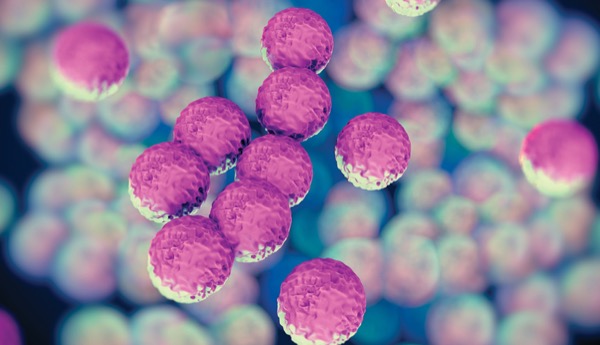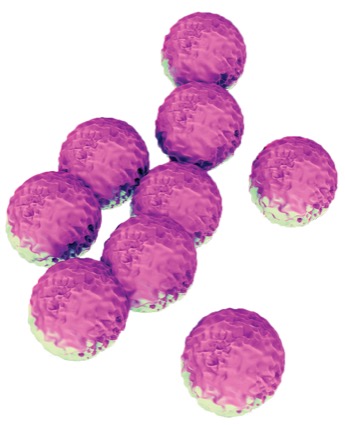Despite decades upon decades of progress in surgery, surgical site infections are still extremely common, accounting for one-fifth of all nosocomial infections.
The impact on patients ranges from trivial to deadly. And the associated costs, such as increased hospital length of stay, readmissions and admission to ICUs, can be staggering—from $1,500 to $5,000 per day per SSI in the United States.
Over generations, guidelines for SSI prevention have evolved as new methods are proposed, put to the test, and ultimately accepted or discarded. For now, these are the interventions known to be most beneficial in general surgery in the preoperative, perioperative and postoperative settings, with comments by Philip S. Barie, MD, MBA, a professor of surgery and public health in medicine at Weill Cornell Medicine, in New York City, and the executive director of the Surgical Infection Society Foundation for Education and Research.
Preoperative
Glycemic control. Glycemic control is not limited to patients with diabetes. Hyperglycemia is associated with an increased risk for an SSI; aim for a preoperative blood glucose level of 110 to 150 mg/dL.
“It’s well established that hyperglycemia impairs neutrophil function and wound healing. In patients with diabetes, the risk of infection increases because the neutrophils’ ability to respond to infection is impaired, both in terms of chemotaxis and phagocytosis. Glycemic control is important not just in the preoperative period, but throughout the perioperative and postoperative periods as well.”
Smoking cessation. Current smoking is the highest risk factor for an SSI; counsel patients to refrain from smoking at least four to six weeks before their procedure. Although there is no literature regarding marijuana and e-cigarette use, their discontinuation also is recommended.
“The reason smoking is a risk factor is not just tissue hypoxia, but because nicotine is a vasoconstrictor; it impairs wound healing and also inhibits delivery of antibiotics to the wound. A lot of people won’t be able to stop completely, but if you can get them to cut down even a little bit, it helps.”
Chlorhexidine bath or shower. Antiseptic bathing has been shown to reduce bacterial colonization of the skin for up to 24 hours. Although this has not been proven to reduce SSIs, it may still play a role.
“This is primarily a matter of personal hygiene and accountability; if you’re scheduled for surgery in the morning, you shouldn’t be taking out the garbage before you come to the hospital.”
Perioperative
Antibiotic prophylaxis. The role of prophylactic antibiotics is somewhat controversial, and indications vary by procedure. The most recent guidelines of the American College of Surgeons recommend using prophylactic antibiotics only when indicated and discontinuing at the time of incision closure.
“To achieve maximal ‘buy-in,’ the Surgical Care Improvement Project guidelines said to administer prophylactic antibiotics immediately prior to the procedure and for no longer than 24 hours afterward (48 hours for cardiac surgery). However, the data show clear that a single dose is effective. It’s far more important to re-dose intraoperatively than postoperatively, especially with short half-life agents such as cefazolin or cefoxitin, if the case is long or if there is a high volume of blood loss.”
Wound protectors. Once controversial, the use of wound protectors is generally supported, particularly in open abdominal surgery and elective biliary tract and colorectal procedures.
“The data aren’t that strong, but surgeons have understood for years that if you minimize contact with wound edges, you’re less likely to inoculate bacteria into the wound.”
Antiseptic sutures. Strong evidence suggests that triclosan-coated antiseptic sutures are superior to standard sutures for decreasing the risk for SSIs, and they are recommended for fascial and subcutaneous closure of clean and clean-contaminated cases.
“The main foil for antiseptic sutures is that they cost 10% more than standard sutures, and some hospitals balk at that. But you can buy an awful lot of triclosan-coated sutures for the cost savings of a single infection, which can run to thousands of dollars.”
Postoperative
Negative wound pressure. “This is so new it may not even appear in the guidelines yet. But the use of a wound vacuum-assisted closure device [Prevena, 3M Corp.] on closed wounds draws out the fluid that accumulates in wounds and appears to reduce the risk of SSI.”
Drain management. Use drains only when necessary and discontinue them as soon as possible. “After 24 hours, drains become a two-way street, just as likely to introduce bacteria as to evacuate them.”
Do not continue prophylactic antibiotics, cover indwelling tubes and drains with antibiotics, or perform antibiotic wound irrigation. “Surgeons learn to do the latter in residency and don’t want to let it go, but it remains unproved.”
Sources
- Ban KA, Minei JP, Laronga C, et al. American College of Surgeons and Surgical Infection Society: surgical site infection guidelines, 2016 update. J Am Coll Surg. 2016;224(1):59-74.
- De Simone B, Sartelli M, Coccolini F, et al. Intraoperative surgical site infection control and prevention: a position paper and future addendum to WSES intra-abdominal infections guidelines. World J Emerg Surg 2020;15(1):10.
- Leaper L, Ousey K. Evidence update on prevention of surgical site infection. Curr Opin Infect Dis. 2015;28(2):158-163.
- López-Cano M, Kraft M, Curell A, et al. Use of topical antibiotics before primary incision closure to prevent surgical site infection: a meta-analysis. Sura Infect (Larchmt). 2019;20(4):261-270.
- Norman G, Atkinson RA, Smith TA, et al. Intracavity lavage and wound irrigation for prevention of surgical site infection. Cochrane Database Sys Rev. 2017;10(10):CD012234.
- Reiffel AJ, Barie PS, Spector JA. A multi-disciplinary review of the potential association between closed-suction drains and surgical site infection. Surg Infect (Larchmt). 2013;14(3):244-269.
- Young P, Khadaroo R. Surgical site infections. Surg Clin N Am. 2014;94(6):1245-1264.


